

WASHINGTON, Jan. 14, 2018 /PRNewswire/ -- Today, the Historic Vehicle Association (HVA) announced that the 1968 Mustang Fastback, serial #8R02S125559 from the movie Bullitt (1968) was recorded as the twenty-first automobile on the National Historic Vehicle Register.
This program is a partnership between the HVA and U.S. Department of the Interior, Historic American Engineering Record and the archives of the Library of Congress. Sean Kiernan of Nashville, Tennessee is the owner of the "Bullitt" car. It was revealed to the public along with the new Ford Mustang Bullitt at the North American International Auto Show in Detroit in celebration of the 50th anniversary of the iconic movie.
The Real Deal
The movie Bullitt was the first film produced for Warner Brothers by Steve McQueen's Solar Productions. Actor Steve McQueen, known for his love of motorcycles and fast cars, was hell-bent on bringing real action to the screen. He and Director Peter Yates succeeded with a visceral cop action flick set in San Francisco. The action was all real in Bullitt. Real speeds, real streets, with real crashes caught on film. The Kiernan's '559 Mustang was the "hero car" used for many of McQueen's close-up scenes. A second car (serial #8R02S125558) '558 Mustang was the "jump car" and was modified for many of the film's stunt scenes.
The eleven-minute chase scene was the film's core and forever changed Hollywood filmmaking.
National Historic Vehicle Register
"The 1968 Ford Mustang Fastback ("Bullitt") is associated with one of the most epic stars in film history and an automotive chase scene that helped propel McQueen to perpetual stardom. This was the moment when McQueen became "the king of cool." It was the first movie he created on his own and had all the signature qualities for which he aspired. He played an understated cop, fighting the good fight, against all odds. What he needed was a car to complete his image to enhance his persona. The 1968 Ford Mustang Fastback was just that car," said Mark Gessler, President of the Historic Vehicle Association.
"From our vantage point it is among the most important automotive artifacts of the twentieth century. It has the incredible combination of Hollywood royalty and decades of an honest family's ownership and the secret that engulfed its mystery. As it is revealed today, it marks a moment on this 50th anniversary for America to look back at a time when McQueen and a 1968 Mustang Fastback could captivate popular culture."
The HVA's historic documentation program of the 1968 Ford Mustang Fastback ("Bullitt") has been underwritten in part through the generous support of Ford Motor Company, Hagerty, Shell, Pennzoil, LKQ Corporation, American Fuel and Petrochemical Manufacturers, and The NB Center for American Automotive Heritage.
Owner Sean Kiernan tells the story as follows:
"For 44 years, our family has owned the Bullitt movie Mustang – serial number '559. There were two Bullitt movie cars. The '558 car was the heavily damaged "jump car" which was recently discovered in Mexico. Our '559 "hero car" was the vehicle that McQueen drove in many of the movie scenes.
For decades, our car has been the subject of numerous rumors, myths and dead-end searches. These stories evolved and took on a life of their own and the car became something of a holy grail in the old car world – waiting to be rediscovered.
Today we revealed the car to the general public and it is pretty much the way my parents bought it back in 1974. They found it in a classified ad from the October 1974 issue of Road & Track. The ad was slightly misspelled and read: "1968 Bullett Mustang driven by McQueen in the movie. Can be documented. Best offer."
According to the New Jersey detective selling the car, my father – Robert Kiernan – was the only person that ever called. We're not exactly sure how much dad paid but it was around six grand. It was quite a bit of money back then for a used '68 Mustang Fastback. In fact, it was about twice to four times the going-rate.
My mom (Robbie Kiernan) and dad were both just 26 years old. They had been married for five years and my sister Kelly was four years old. They lived in Madison, New Jersey about 25 miles from New York City.
Bullitt wasn't a second car – it was their only car. Dad took the train every day to the World Trade Center where he worked in insurance. Mom drove Bullitt to St. Vincent's parish where she taught third grade. The car was never modified – it has a straight exhaust and shook the pavement. God only knows what those kids must have thought. Mom must have been pretty cool.
On weekends, it was the family car and was driven to Maine and upstate New York numerous times. It must have been deafening. There was no sound-proofing because it had been removed for the movie. The trunk had a huge cut-out for a smoke machine. When it rained, I have no idea how the luggage stayed dry. We recently discovered the rear seatbelts hidden with Gaffer's Tape. I guess my sister Kelly was never buckled in. Dad installed a pair of speakers in the back that are still there. With no air-conditioning, windows rolled down and the blaring AM radio, those Bullitt road trips in the 1970s must have been thrilling.
In 1977 my dad got a call from Steve McQueen. Steve had tracked down the prior owner, who gave him our phone number. McQueen wanted the car. He was a guy that was not used to hearing the word "no." But my dad told him: "no thanks, we are not interested in selling." McQueen followed up with a letter reiterating his interest, saying he wanted the car back and offered a trade or something as long as it wasn't "too much monies." Dad never answered that letter. Bullitt was part of our family.
By the time it was parked our family had put 46,000 miles on the car.
I was born in 1981 – about the last time the Bullitt moved under its own power. Dad was an executive and had a company car. Mom was driving something more practical – a Plymouth Horizon - and I had a seat belt.
Dad was always a car guy but by the 1980s another passion bit him. It was horses. Fast cars were moved to the sideline in favor of thoroughbreds. By the time we moved to our Kentucky farm outside of Cincinnati, we had a number of horses. Ultimately, the farm became a full-time job for all of us.
I grew up loving horses and cars alike. We always had something cool to drive. Eventually I learned the story about our Bullitt Mustang. It was a car I would come to know well. While I'd never heard its cylinders fire, I pretended to drive it thousands of miles. I would hop in the seat, grab the steering wheel and run through the gears. I honestly have no idea how that Hurst shifter ever survived my daily abuse.
After Steve McQueen passed, hunting for the Bullitt Mustang intensified. While the car was decidedly not for sale, it simply became a project dad didn't have time for. Gradually, it became our family secret out of necessity. Dad was now a busy executive with horse racing business interests, but he took quiet pride knowing the Bullitt was waiting in the garage.
By 1995 we moved to a house on a smaller farm near Nashville. A few years later dad retired and started scaling back.
I took a job in automotive refinishing. By the late 1990s my father and I started to talk about rebuilding Bullitt. We became further inspired when, in 2001, Ford launched its first anniversary Mustang Bullitt which stirred up more talk of the whereabouts of our original car.
Dad started disassembly of the car in our modest two-car garage. Unfortunately, we still had a farm that took most of our time.
When our father-son project finally started to gain momentum, illness struck – my father was diagnosed with Parkinson's disease. For the next couple of years, we could talk about cars, but not accomplish much. In 2014, he passed away. It became a father-son project we were never able to finish together.
Over the past two years, I've worked alone in that same garage to return Bullitt to the condition it was when it was my parent's daily driver. The engine was rebuilt, aging carpets were replaced, and a new steering wheel added similar to the one used in the movie. Aside from that it is pretty much the way it was, with the evidence of our family road miles, and the gentle patina that comes from years of storage.
The paint has never been changed. Some wish it was shinier. It never was. In the movie, all the badges were removed and the paint was scoured with Scotch-Brite pads to make it dull. After the movie, it received a generous application of Bondo (to hide the damage), and a single-stage respray in its signature Highland Green color.
The seats, interior, trunk space and camera mounts remain unaltered and consistent with its prior movie life. When originally prepared for resale, the antenna was returned to the right front fender and the movie rear-view mirror was replaced with a stock unit. The Hurst shifter had been installed by the former owner and we never replaced it.
The front bumper is new and so is the front valance. These were damaged when my grandfather backed into the car in the 1970's. No artificial "patina" has been added - all the new parts can be plainly identified. The car is honest and that's the way I wanted it.
The workmanship is all mine, as it was mine to do alone as homage to my father and the family secret I had internalized.
Over the last 18 months, several experts were brought in to see the car. Mustang expert Kevin Marti was the first and he verified our Mustang as the '559 Bullitt movie car. McKeel Hagerty was contacted, as Hagerty insures the car.
We were then connected with the Historic Vehicle Association in Washington, D.C. for guidance on preserving the car and the related artifacts. They photographed, scanned and documented the car for the National Historic Vehicle Register, in partnership with the U.S. Department of the Interior, Historic American Engineering Record.
We can all be grateful that these documents will be archived in the Library of Congress so that future generations of Americans can see the car, just as it is today. Our family is honored that it is the twenty-first vehicle to be recorded under the program and the subject of an HVA documentary that they will release later in 2018. I know my dad would be proud.
We contacted Ford early on, as that had been my father's wish. Together with the HVA, we decided the best time to reveal the car would be today to commemorate both the 50th anniversary of the year the car was produced, and the 50th anniversary of the Bullitt movie.
I am grateful to my wife Samantha and my good friends Steve Forister, Steven Whitaker, Casey Wallace and Ken Horstman, because without their encouragement and support the car would not be here today. I'm also grateful to LKQ Corporation (where I've been employed for ten years) for flexibility in 2018 to tour with the car.
I thank my dad, Robert Kiernan, for the years we shared together, my sister Kelly and my mom, Robbie Kiernan. She must be the coolest third grade teacher in history, because she drove the Bullitt Mustang – our family car and a true national treasure."
The Car: 1968 Ford Mustang Fastback ("Bullitt" – '559)
|
Serial Number 8R02S125559 | |
|
8 |
Build year 1968 |
|
R |
Built at San Diego, California plant |
|
02 |
Mustang 2-Door Fastback |
|
125559 |
Serial number of this car scheduled at the San Diego plant |
|
63B |
Mustang décor 2-Door Fastback |
|
R |
Highland Green paint color (Ford #3067-A) |
|
6A |
Black vinyl luxury bucket seats |
|
09A |
Scheduled for build January 9, 1968 |
|
71 |
Los Angeles (DSO (District Sales Office) |
|
5 |
3.00 conventional rear axle |
|
5 |
Four-speed manual transmission |
Features: extra cooling package, GT equipment group, optional axle ratio, wide oval white sidewall nylon tires, power disc brakes, AM radio, interior décor group, deluxe seat belts, remote control left hand mirror and heavy-duty battery.
The actual build date was January 8, 1968. It was sold on March 11, 1968.
- The above information courtesy of Ford Motor Company and Kevin Marti, Marti Auto Works.
Both the '558 and '559 cars shared identical build specifications. Upon purchase, the cars were prepared by Max Balchowsky for the use in the Bullitt movie. These modifications included: Borg-Warner T-10 heavy- duty four-speed manual transmission, heavy- duty Borg-Warner clutch, 390 ci engine built by Balchowsky, milled heads, carburetor and distributor modification, 4:10 Positraction rear end, heavy-duty universal joints, 5-ton motor mounts, reinforced shock mounts, cross beam support bar, Helwig stabilizers front and rear, Koni shocks, heavy-duty coil springs, frame reinforcements, American Racing mag wheels, Dunlop 5:00 M-15 racing tires on the front, 5:75x10:40 15 Firestone GP Indy Tires on the rear, custom exhaust and a Shelby-type steering wheel.
All exterior Ford and Mustang badging was removed. The Highland Green paint was scuffed to create a dull appearance. Certain features were painted black, such as the rear gas cap. The reverse lights were removed.
After filming, the "Bullitt" car was repaired and painted (Highland Green) for resale.
HVA Documentary and Tour
The HVA is producing a feature length documentary, entitled Little Pieces; The Untold Story of the Bullitt Mustang, about the '559 "Bullitt" Mustang to be released in 2018. The film will feature exclusive interviews with the Kiernan family, as well as many other people connected with "Bullitt," in a definitive telling of the beloved car's entire mysterious life.
A national tour of the '559 "Bullitt" Mustang is also being organized by the HVA and will be announced in the near future.
About the Historic Vehicle Association
The HVA is dedicated to preserving and sharing America's automotive heritage. In 2014, the HVA established the National Historic Vehicle Register in partnership with the U.S. Department of the Interior, Heritage Documentation Programs and Library of Congress to document historically significant automobiles in America's past. The HVA is supported by over 400,000 individual historic vehicle owners, key stakeholders, corporations and benefactors. Please visit: historicvehicle.org
About Shell Lubricants
The term 'Shell Lubricants' collectively refers to the companies of Royal Dutch Shell plc that are engaged in the lubricants business. Shell Lubricants companies lead the lubricants industry, supplying more than 11 percent of global lubricants volume.* The companies manufacture and blend products for use in consumer, heavy industrial and commercial transport applications. The Shell Lubricants portfolio of top-quality brands includes Pennzoil®, Quaker State®, FormulaShell®, Shell TELLUS®, Shell RIMULA®, Shell ROTELLA® T, Shell SPIRAX® and Jiffy Lube®. http://www.shell.com/
*Kline & Company, "Global Lubricants Industry November 2017: Market Analysis and Assessment."
BULLITT and all related characters and elements © and ™ Warner Bros Entertainment Inc. (s18)
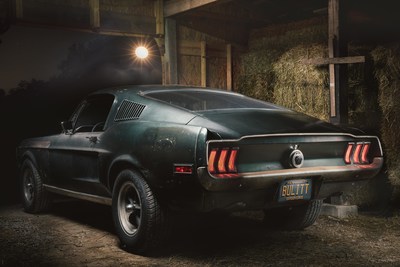


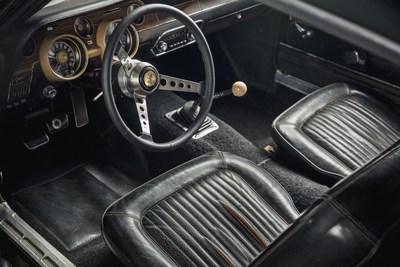

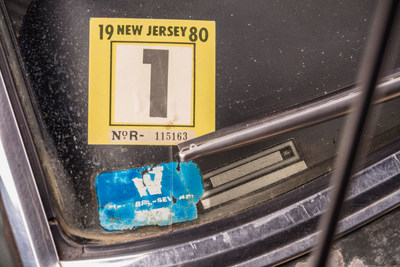
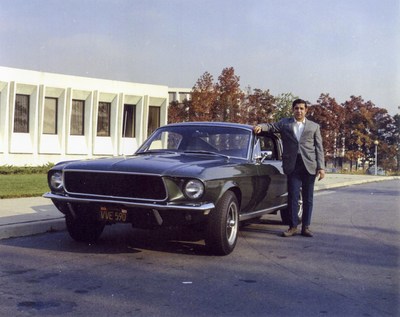
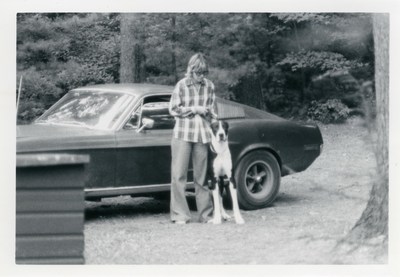
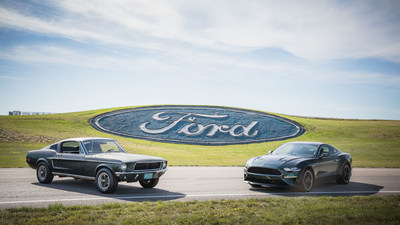





SOURCE Historic Vehicle Association